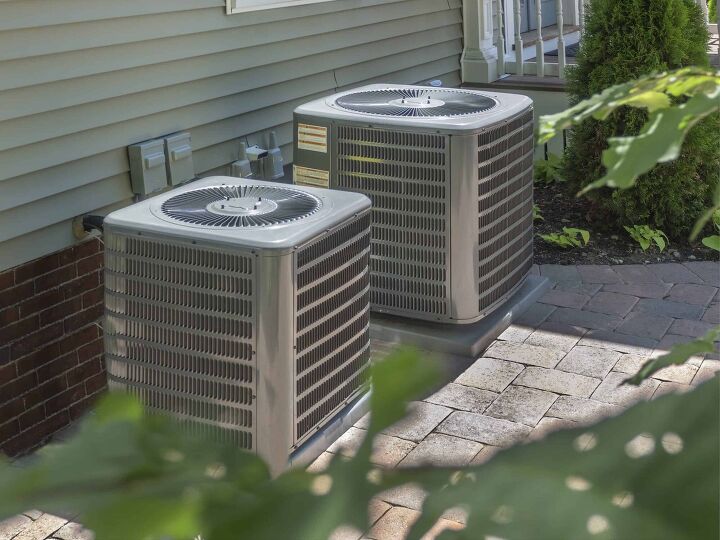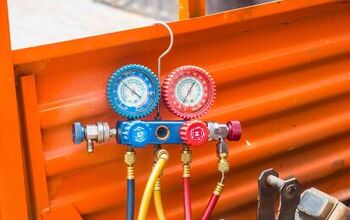Why Won't My Heat Pump Go Into Defrost Mode?

Does your heat pump have a buildup of ice or is it having trouble entering defrost mode? Eventually, almost every heat pump will reach a point where it creates ice on its mechanisms. The machine will then enter a mode known as defrosting in order to combat and melt the ice.
The buildup of ice on your heat pump will affect the productivity of the machine. Therefore, if the device is not engaging in the melting process at all, this will not only lower the performance but can also end up damaging or completely breaking your heat pump.
The reasons for your heat pump not entering defrost mode can range from lack of maintenance to more serious inner mechanical failure. Regardless, we will explore all of the possible causes for why your heat pump isn’t defrosting and what you can do to prevent this issue from reoccurring.
Do You Need a Heating and Cooling Contractor?
Get free, zero-commitment quotes from pro contractors near you.

What Is a Heat Pump and How Does it Work?
A heat pump is an electrical device that essentially removes heat from one place and transfers it to another. However, it has three very specific modes or cycles; heating, cooling and defrosting.
The machine’s purpose is to extract the heat out of the water or air and transfer it by cycling a substance known as a refrigerant by way of evaporation and condensation. Every heating pump contains the same basic main components which are; a compressor, condensing coil, evaporator, reverse valve, thermostats, sensors and fans.
The refrigerant will be pumped by the compressor between two heat exchanger coils. One of the coils will cause the refrigerant to evaporate at low pressure and absorb heat from the surroundings. The refrigerant will then condense at high pressure while on its way to the second coil. It is at this point in the process that the heat pump releases the heat that was previously absorbed.
What Is the Defrost Mode?
During operation of the heat pump, ice can build up on the outside coils or fan parts that are essential to the heating process. When this happens, the thermostat will detect a drop in temperature, the reverse valve will cause the system to switch from heating to cooling and the defrost mode starts.
Your heat pump should enter defrost mode on a regular basis and the cycle will typically occur every 30 minutes. Once a certain temperature is reached and the melting process has completed, the system will switch back to its normal heating procedures.
A properly functioning heat pump will have the ability to defrost the ice or snow that accumulates on the components in winter or any cold climate. However, when the device stops defrosting, it’s important to identify the problem and repair it before it becomes too late.
Possible Reasons for Your Heat Pump Not Entering Defrost Mode
Here are some of the most common reasons for why your heat pump may not be defrosting properly. Look out for the following symptoms in order to diagnose the issue.
- Lack of drainage – If your heat pump has become disrupted and the drainage is clogged, water will be stored inside the device. This will cause a reduction in temperature and blocks of ice will form on the components.
- Water dripping – This seems like a more obvious cause but should be mentioned. If you notice that water is dripping onto the heat pump’s condenser or evaporator, ice buildup during cold climates will accelerate.
- Low refrigerant – If your heat pump does not have ample amount of refrigerant, the components can become frosted. The refrigerant is responsible for heating up these mechanisms and without it, defrosting cannot occur.
- Improper installation – If the heat pump was installed incorrectly this can cause the defrost mode to malfunction. Some installation issues could be improper drainage, decreased airflow, lack of flow inside the device, bad positioning or anything that doesn’t allow the refrigerant to pass through the system correctly.
- Wiring issues – The defrost mode may be unable to start because of damaged cables inside the system.
- Broken reverse valve – The reverse valve is responsible for switching the heating process to air conditioning mode. If this valve is malfunctioning, the system will automatically create more ice buildup and will not enter defrost mode.
- Bad thermostat or sensor – This component’s purpose is to detect the temperature and signal when the defrost mode needs to start. A sensing problem may cause excess ice buildup when the thermostat or sensor cannot communicate with the rest of the device
- Outdoor fan problem – The fan motor in your heat pump may be failing or dead. Also, the fan itself could be broken, obstructing the release of heat from the unit and causing ice to accumulate.
How to Troubleshoot a Heat Pump That Is Not Defrosting
First of all, you should never use a hard or sharp object to chip away the ice that has accumulated on the unit. The fan coils are very fragile and easily susceptible to damage. Instead, to melt the ice, you can use water from a hose.
After you’ve removed the ice, clear out any leaves or other debris in the outdoor coil. You should be maintaining this component and keeping it clean at all times. The coil requires special attention during cold months.
Next, check the internal area of the device for any components that may be broken, malfunctioning or generally impeding the defrosting process. Whether it’s the wires, low refrigerant, reverse valve, a stuck or inefficient fan, check everything to make sure they’re all in good, working order.
Finally, you should consult an HVAC professional at least every six months or before winter. That way you can have peace of mind knowing that your device is functioning properly and will be able to defrost.
Consider Installing an EDIDS
EDIDS, or Energy Docs Intelligent Defrost System is a timer, sensor and thermostat system that will stimulate the defrost process quicker and more efficiently. Developed by Mike MacFarland in Redding, California, his device uses the standard timer and temperature sensor but adds a pressure sensor into the mix.
EDIDS measures and monitors the pressure differences between the inside and outside of the unit. As the coil accumulates ice and frost, the pressure will increase. An average heat pump will enter defrost mode roughly every 30 minutes. Whereas, MacFarland’s system will kick off the defrost cycle only when necessary and when notified by the pressure sensor.
Since the original system is built only on temperature and time, the EDIDS device makes your heat pump much more intuitive.
Relevant Questions
If all the components are properly functioning, the best way to force the unit into defrost mode is to set the temperature to a low setting and adjust the thermostat to cooling mode. Allow it to run until the ice has defrosted, then switch it back to the heat setting.
How do I know if my heat pump is in defrost mode?You’ll be able to tell that the system is in defrost mode when the indoor fan stops, heating stops and there may be a blinking indicator light. The outdoor fan will also stop but the compressor will keep running.
Do You Need a Heating and Cooling Contractor?
Get free, zero-commitment quotes from pro contractors near you.

Wrapping It Up
If you’re certain that your heat pump is not entering defrost mode and you’re experiencing ice accumulation, this could be due to a number of reasons.
Whether it’s the failure of one of the unit’s components or simply due to lack of maintenance, it’s always recommended to have an HVAC professional take a look.
For more issues relating to your HVAC system check out, “ How Much Does It Cost to Replace a Furnace Draft Inducer Motor?” and “ Why Is My Furnace Making a Loud Humming Noise?”

Jessica considers herself a home improvement and design enthusiast. She grew up surrounded by constant home improvement projects and owes most of what she knows to helping her dad renovate her childhood home. Being a Los Angeles resident, Jessica spends a lot of her time looking for her next DIY project and sharing her love for home design.
More by Jessica Stone



























